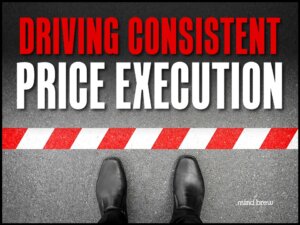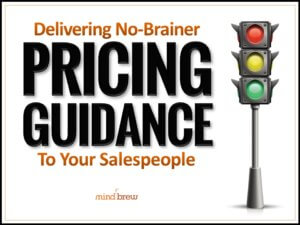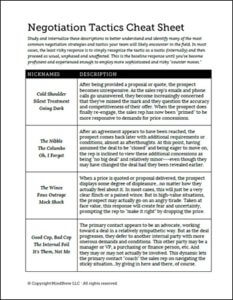In the Driving Consistent Price Execution session, we explore a number of proven strategies and tactics for improving price execution and compliance in the field. Of course, the overarching theme throughout this session is that leading pricing teams will strive to address the issue of consistent price execution and compliance systemically.
In other words, instead of trying to correct various price execution problems and defects after the fact, we should put systems and processes in place that effectively prevent those problems from occurring in the first place. And of course, the more we understand about human nature and behavioral dynamics, the better we’ll be at crafting effective systems and processes.
With respect to price execution and compliance, one of the most powerful aspects of human behavior to understand and harness is the tendency for human beings to gravitate toward whatever happens to be easiest, fastest, and most convenient. Like running water, our decisions and actions will tend to find the path of least resistance, for better or worse.
And that last part…the “for better or worse” part…is an important takeaway. You see, while we may not like to admit it, we humans tend to gravitate toward the easiest, fastest, or most convenient paths, even when we know full well that other paths are qualitatively or quantitatively “better.”
Taking this facet of human behavior into consideration, we should always be asking a two-part question about our pricing improvement efforts:
“Are we making it easier to price right, while making it harder to price wrong?”
Imagine putting a ton of time and effort into crafting a highly-sophisticated pricing model that uses response measures in hundreds of attribute-based segments to generate deal-specific price bands. Then imagine that in order to access these recommendations, salespeople have to log in to a separate system, enter the specifics of each order, and then manually input the resulting price recommendations back into their standard quoting tools.
In this all-too-real scenario, are we making it easier for them price right?
Now there’s little doubt the price recommendations being generated are likely to be significantly better and more accurate than any cost-plus guesses that salespeople might come with on their own. But if guessing is a whole lot easier, faster, and more convenient? And there’s not much downside to guessing wrong? Well, it doesn’t take a behavioral scientist to know what’s going to happen, nine times out of ten.
Having a robust and accurate pricing model that aligns to the dynamics of the market is certainly a big step in the right direction with respect to encouraging natural compliance. But to make it as easy as possible to leverage that model and price right in the field, we’d also think about things like:
- Integrating price recommendations directly into existing toolsets, rather than forcing additional lookups or logins.
- Providing intuitive drill-downs to peer-based scatterplots or other data to explain and support the recommendations.
- Showing the impacts of deal-level pricing and discounting decisions on the sales reps’ incentive comp payouts.
At the same time, we’ll also want to take proactive steps to make it harder for our people to price wrong. In this context, making it harder includes making it slower, making it more personally and professionally costly, and so on. To do this, we’d consider things such as:
- Alerting reps when deviations from the pricing guidance will result in delays as orders are routed for further analysis and approval.
- Creating a personal cost to rogue pricing decisions by adding a target price attainment component to incentive comp plans.
- Leveraging professional peer pressure by publishing relative target price attainment rankings and contribution margin levels.
To build truly effective pricing systems and processes that produce the outcomes we want by default, we need to be working with human nature rather than against it. And once we recognize that it’s just basic human nature to do what’s easy and avoid what’s hard, we can take proactive steps on both sides of the ledger to encourage alignment, while at the same time discouraging deviation.
When we make it easier to price right than to price wrong, price execution and compliance in the field happen naturally and as a matter of course.
















